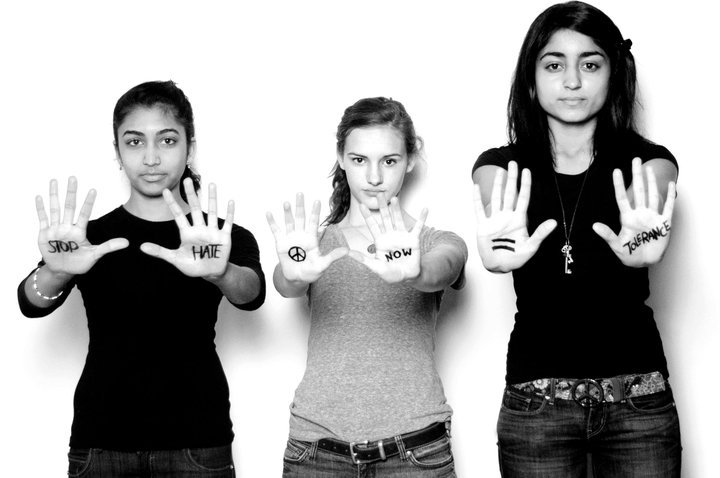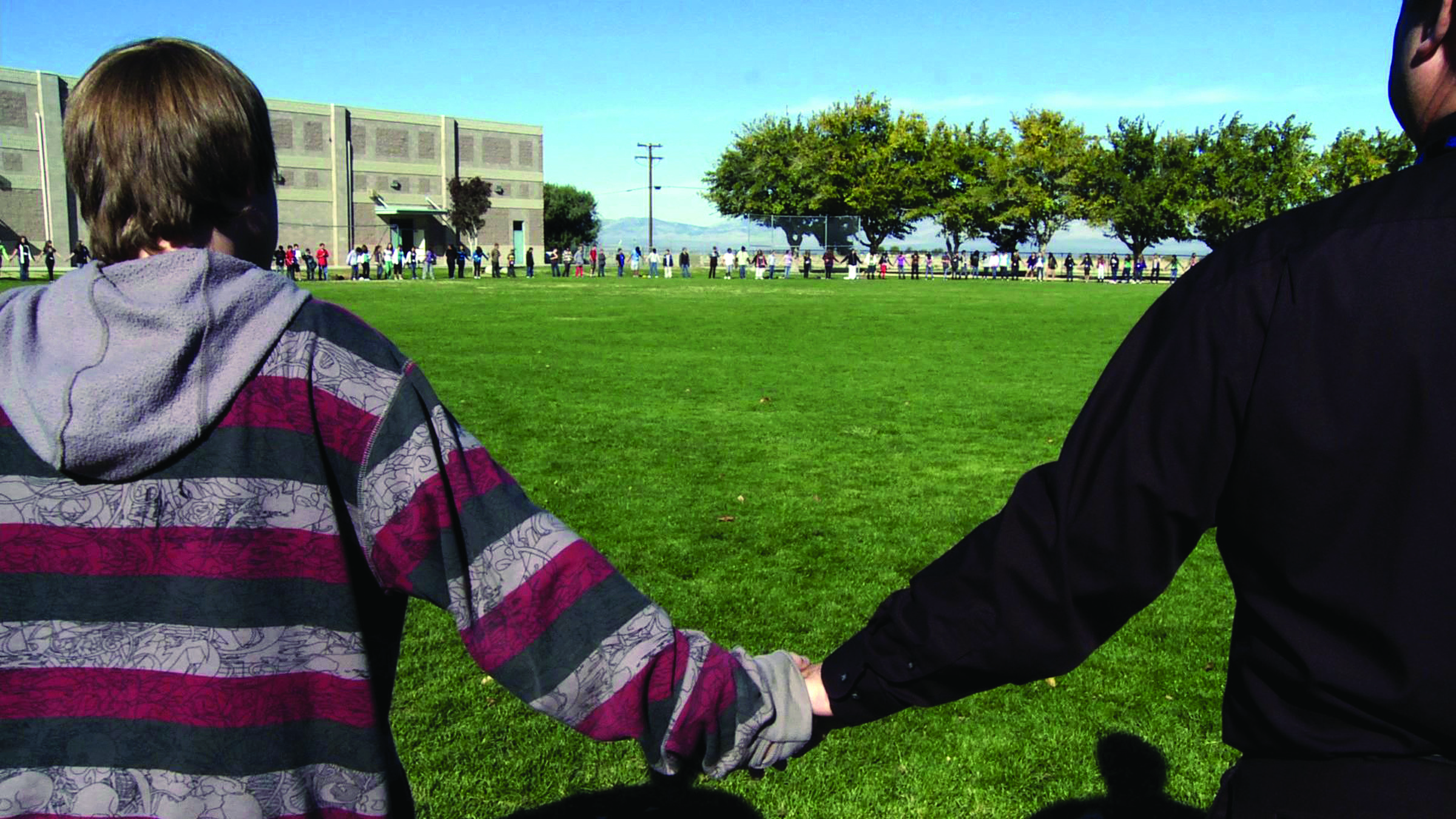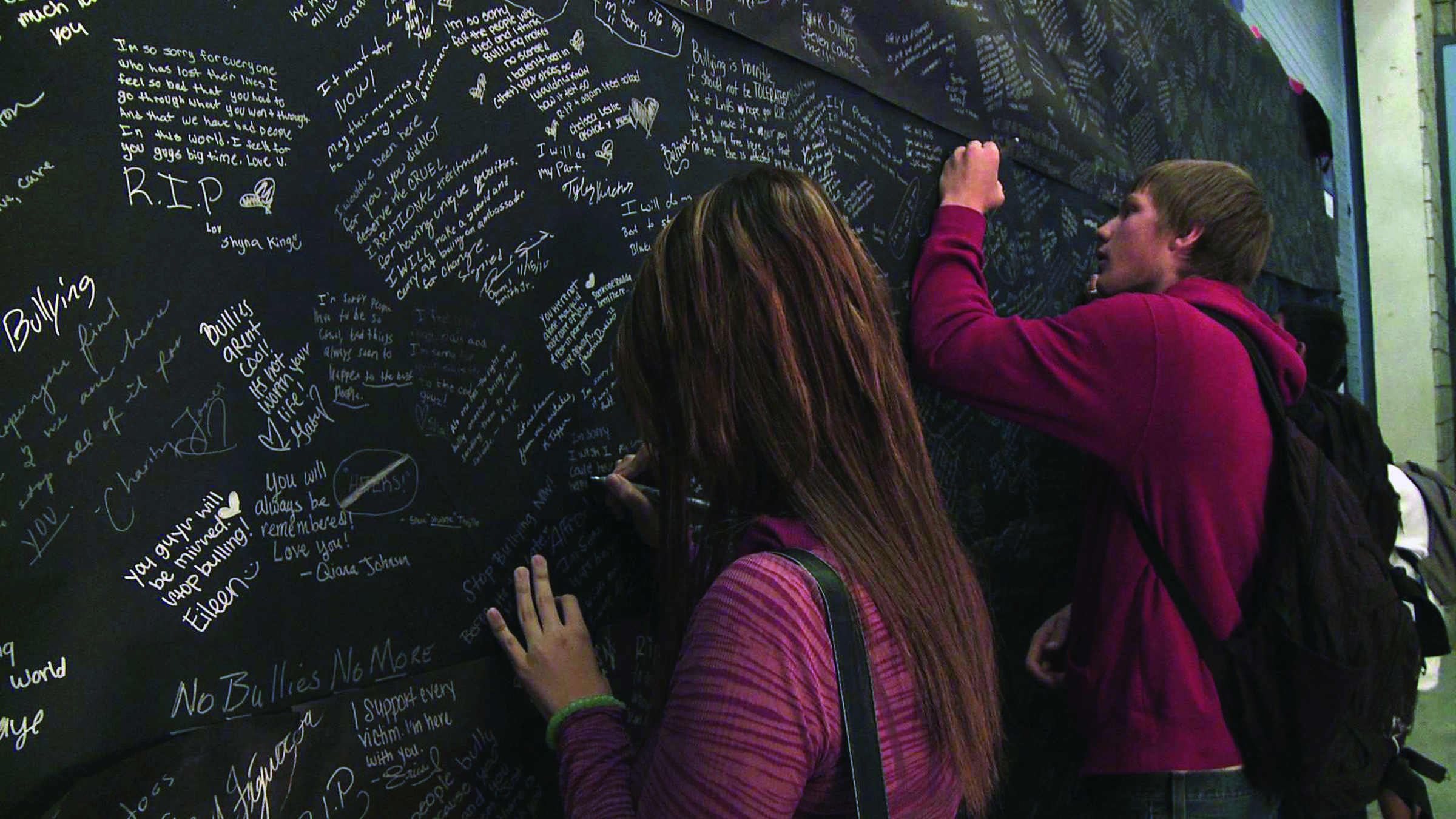NIOT has been getting requests from schools and communities across the country about how to respond to hate incidents. NIOS leader Becki Cohn Vargas offers this advice.

The core message of Not In Our Town is that each of us has a role to play in creating safe, inclusive communities and schools for everyone and stopping hate, bullying, and intolerance. Here are a few examples of how to get started:
- Create a school climate of equity and identity safety, addressing bullying all forms of intolerance
- Prevent and respond to all acts of hate
- Put the students in the driver’s seat to motivate their peers to become empathetic upstanders
- Involve the entire community in efforts to create safe and inclusive environments
Not In Our School has identified action steps to be taken in schools. Read through the action steps listed below, find the actions you can take and share them with others in your school. Find out more here.
FOR EDUCATIONAL LEADERS AND STAFF
When leaders are brave, others will follow. Leadership can be initiated by any member of a school community, regardless of role. Ignoring the problem of hate and intolerance may lead to escalating violence and mistrust. Take daily actions for safe classrooms and work with colleagues to develop long-range plans to build a safe, inclusive community for all.
Prevent Hate BY BUILDING A POSITIVE CLIMATE AT SCHOOL
- Help students learn to find their voice. Teach them to be upstanders who stop harm by standing up and speaking up for themselves and others.
- Make expectations clear through
Regular messages by administration and teachers to inform the students that this is a safe and inclusive community and bullying, hurtful teasing and intolerance is not acceptable. Inform the parent community as well.
- Provide classroom lessons that help students learn social and emotional skills, empathy, and respect and ways to stand up to bullying and intolerance.
- Provide professional development for the entire staff on bullying prevention, culturally responsive teaching, and how to support students of all backgrounds.
- Initiate campus-wide prevention and awareness building events:
Create a forum for dialogue about differences and diversity.
Involve students in finding solutions and leading their peers to stop hate and bullying.
Invite community members and leaders to serve as role models. Also, include others who may be vulnerable to hate to speak at the school.
Inform parents of the issues and the actions you are taking to find solutions.
RESPOND SWIFTLY TO INCIDENTS LARGE AND SMALL
Acknowledge hate speech, hate crimes or bias incidents when they occur and make it clear to your students that this type of behavior is unacceptable. Determine if the incident is a daily occurrence or a larger crisis. Daily discipline may involve 1 -3 students breaking school rules and hurting one another. A larger crisis could be a hate or bias-based incident that includes injuries, verbal or cyber attacks against a student based on their background. Often larger numbers of students are involved and even more are aware of what happened. In all cases, the incidents should not be brushed under the rug. A planned response by school leaders is needed.

For Daily Occurrences
- Take swift action when acts of bullying, intolerance, and/or hate occurs.
- Develop protocols for staff to inform school administration and school board.
- Support the targets of bullying.
Meet with the students and their families. Provide counseling if needed. Maintain contact to assure the student does not experience further harassment or exclusion.
- Use restorative practices to help students who bully or harass others learn from their mistakes.
Help students and their parents understand what happened and how you are handling it. Provide counseling if needed.
- Avoid bringing together those who bully or harass with the targets unless a process occurs where you can assure the target will not feel intimidated or face retaliation.
For A Larger Crisis
- Assure the campus is safe. Follow school’s emergency protocols.
- Determine if this is a bias incident or hate crime (see box below).
- If it is a hate crime, law enforcement must be involved. If it is a hate or bias incident, follow school discipline policies.
- Do a full investigation of the incident.
- Make a clear statement denouncing the act.
- School principal or superintendents should address the student body and send a letter to the community explaining and denouncing what occurred without naming students..
- Explain why the incident is very serious and harmful to the student and the school.
- The message should also indicate a full investigation and response is in process.
- Also, include the school’s commitment to work on a sustained basis to assure a similar incident does not occur again.
- Provide accurate updates to the school community and to the media while not breaking legal requirements for privacy of minors.
- Avoid misinformation and stop the spread of rumors.
- Support the target(s)
- Listen to, encourage, and provide counseling if needed. Assure that the student is not singled out in any way, or subject to further intimidation by peers.
- Support All Students
- Recognize that a hate or bias based crime or bullying incident damages not only the target, but others who share the target’s background. Monitor all students of the same background as the target to assure they are kept safe and given support.
- Support the entire student body and begin a healing process.
- Provide counseling if needed.
- Support the perpetrators with restorative practices and opportunities to learn from errors.
- Meet with parents
- Inform the parent community through a town hall meeting to inform them of efforts to make the school safe again. Assure parents that the school has a sustained commitment to build bridges of understanding across differences.
- If you experience resistance, it may be part of an organized strategy.
- Schools have reported that they have received complaints and resistance to actions to create safe schools. In some instances these orchestrated complaints are promoted by national hate groups working to undermine safe school practices.
- Do not allow this resistance to deter you from working to create safety for all students and following federal guidelines to prevent bullying and harassment.
- Identify community allies, neighbors, and organizational partners.
- Debrief the incident and your response with school leadership team to learn from the experience and improve in the future.
- Initiate or strengthen prevention activities as described above.
|
Hate crime:
Hate or Bias Incident:
|
FOR STUDENTS

Young people can galvanize the entire community to stand up to hate. Student-led campaigns, teach-ins, and student actions can educate and inspire not only fellow students, but they can motivate adults and community leaders to act. Students can learn to:
- Speak up when they witness bias, hate and bullying.
- Go to a trusted teacher or campus leader for guidance and support.
- Reach out and stand with each other and all who are targets of hate and bias.
- Work with campus or school leaders to show support for student actions to prevent hate.

Dr. Becki Cohn-Vargas is the Director of Not In Our School (NIOS). She has spoken on the subject of how to combat bullying at conferences,schools, and universities across the United States. Becki's newbook,“Identity Safe Classrooms: Places to Belong and Learn,” co-authored with Dr. Dorothy Steele was published by Corwin Press. Prior to working at The Working Group, she spent over 35 years in public education in California. She was a preschool director in Healdsburg, teacher and principal in the Oakland Unified School District, Elementary Curriculum Director for the Palo Alto Unified School District and Superintendent of the Luther Burbank School District. While serving in Palo Alto in 2003, Becki initiated Not In Our School: Palo Alto, one of the first NIOS initiatives featured on KQED public television.